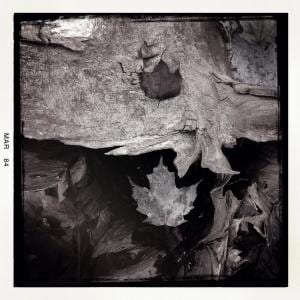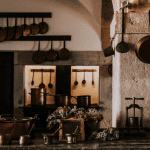Transplant your Green Allies in the Fall
Now is the time to share the wealth! I mean that in the full and deep Fehu sense of the word. It literally means “cattle” and more generally means “wealth and prosperity”. This is the season of the harvest, and one of the things I harvest is plants. I was excited to be able to share medicinal plants with a local queer community garden and hope to share more of my medicinal plants with people. It’s the best time of year to transplant trees, bushes, and perennials because they’re already going dormant. If you move them now, rather than waiting for the spring, it gives them the maximum amount of time during the wet and rain to grow and send down roots.
Make sure to dig deeply around the roots because that’s the health and life of the plant, without enough roots, it may die of transplant shock. Moving plants during the moist fall and spring helps to buffer them from the shock of transplanting. People often think of summer as the time to garden and plant things, because they’re thinking about vegetables and annuals. For plants that live longer than one year, the fall is the best time, and the spring is the second-best time.

Collect Seeds for the Spring
The seeds are mostly collected, carefully dried and put in paper bags, labeled with markers as to their species and variety. When it’s do-it-yourself, often enough all the seeds of one species are mixed together. Our sunflowers are an assorted lot and the finches don’t seem to be picky about the petal color or shape. They only care that the seeds are easily reachable. We plant our sunflowers along the side fence, which abuts a major road. In all things, I seem to require a certain amount of liminality, including my home. I am the witch at the edge of the village.
We do not eat the sunflower seed ourselves, because I know that area is likely to have heavy metals. I sit on my porch and ponder those beautiful tiny yellow birds, ravenously feeding. I know that it is unlikely that the heavy metals will affect their short lives too much, but just as heavy metals accumulate in the ocean’s food chain, I worry for our local predators. I must assume a certain amount of heavy metals in our food as well. We humans are not exempt from the toxicity we create. My family eats miso and other fermented foods, which have been shown to remove heavy metals from the body. It’s been a long time since I’ve made miso, and the eldest child has expressed interested in trying it. If I do it again I will make sure to put some up as a 5 year ferment. I want to know what homemade long-aged miso is like.

Now is the Traditional Time to Ferment and Pickle Vegetables
The kimchee ferment is almost done, and it’s a good thing since the middle eastern turnip pickles are almost gone. It was exciting to use our own lovage to flavor the pickles. Lovage is a perennial herb related to celery, not often used or talked about in modern gardening. I got mine from Richters. As a gardener, celery is difficult to grow. It requires blanching, which means you have to cover it, with soil or fabric. It has high nutrition requirements and water requirements. If it doesn’t get what it needs it ends up stringy and mostly leaf. Homegrown celery is a different beast from the moist abundance of store-bought, silt soil, professional celery hearts. Lovage is always good in soup, and apparently in pickles as well. Frankly, if I’m going to grow a stringy, leafy veg that tastes like celery, I’ll just grow the perennial lovage and not have to plant it every year.
https://www.instagram.com/p/B2hExtdnP9I/












